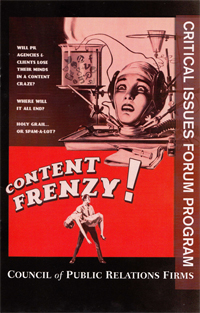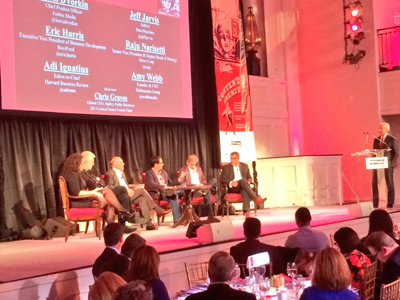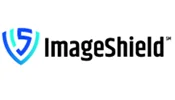PR firms bent on becoming “media companies” via development of clever web content for clients may follow mainstream media off the same cliff, said Jeff Jarvis, BuzzMachine blogger, today at the Council of PR Firms' Critical Issues Forum in New York.
He told the audience to stick to public relations by establishing social engagement relationships for clients.
 Jarvis railed against bombarding people with “more crappy content.”
Jarvis railed against bombarding people with “more crappy content.”
The “calcified establishment newsroom culture” is the reason for opposition to native advertising or sponsored content, countered Lewis Dvorkin, chief product officer at Forbes Media.
He talked about the success of its three-year-old “BrandVoice” native ad program that generates 20 percent of the magazine’s total ad revenue.
Forbes has run BrandVoice efforts for advertisers such as IBM, Aflac, CapitalOne, Oracle and Oppenheimer.
Dvorkin did say that when he was 25 he would have been “appalled” at the concept of native advertising. He noted that 25 and 35-year old Forbes staffers opposed BrandVoice when it was launched, but now fully support the effort.
A very entertaining Chris Graves, Ogilvy PR CEO and chair of the forum, moderated the debate called “Content Frenzy: Holly Grail ... or Spam-a-Lot?”
In introducing the session, Graves showed clips of the “Camel News Caravan,” a 15-minute NBC News program that ran from 1949 to 1956 sponsored by the cigarette brand, and pitched it as an early example of native advertising.
He also had a clip from the legendary David Ogilvy, urging ad men to “think like an editor,” excellent advice for native advertisers.
Dvorkin said PR firms and ad agencies sometimes dilute the effectiveness of native ads by demanding too many product selling points.
Native Advertising is ‘Buzzy’
Amy Webb, CEO of Webbmedia, dismissed native ads as nothing more than the digital transmission of traditional print advertorials. “Native advertising is a buzzy word,” she said.
 Webb’s strategy is to deliver and analyze data to enhance one-on-one social relationships.
Webb’s strategy is to deliver and analyze data to enhance one-on-one social relationships.
Raju Narisetti, senior VP/deputy head of strategy at News Corp., said the Wall Street Journal helps marketers tell stories about their brands.
The WSJ isn’t just competing against outlets like Bloomberg and Financial Times. It is vying for the precious attention of an audience that has a myriad of viewing options, he said.
Adi Ignatius, editor-in-chief of the Harvard Business Review, warned that native advertising may be something that “comes and goes.”
A media company that sells out its reputation for sponsored ads will be hurting when the next big thing arrives, according to Ignatius.


 AB InBev has hired Donna Lorenson as chief communications officer and elevated the PR function to the senior leadership structure in the aftermath of the Bud Light marketing disaster.
AB InBev has hired Donna Lorenson as chief communications officer and elevated the PR function to the senior leadership structure in the aftermath of the Bud Light marketing disaster. Tunheim handled the Minnesota USA World Expo bid committee, which on June 21 congratulated Serbia for landing the 2027 event.
Tunheim handled the Minnesota USA World Expo bid committee, which on June 21 congratulated Serbia for landing the 2027 event. United Minds, management consultancy, has launched Myriant, a business resiliency offering to help clients deal with the challenges during this era of misinformation, polarization and geopolitical upheaval.
United Minds, management consultancy, has launched Myriant, a business resiliency offering to help clients deal with the challenges during this era of misinformation, polarization and geopolitical upheaval.  ImageShield, which guards against online image abuse, is looking for a communications pro to handle its PR and marketing campaigns.
ImageShield, which guards against online image abuse, is looking for a communications pro to handle its PR and marketing campaigns. Who knew that there is a real paper company, Pennsylvania Paper & Supply, inside the iconic building seen at the opening of every episode of “The Office?”
Who knew that there is a real paper company, Pennsylvania Paper & Supply, inside the iconic building seen at the opening of every episode of “The Office?” 


 Have a comment? Send it to
Have a comment? Send it to 
No comments have been submitted for this story yet.